Amethyst
Amethysts have a simple elegance and beauty, with its smooth violet tones that just
make it pop. Nowadays, you often see it mixed with other gemstones and even set alongside
diamonds to create these fancy but affordable showstoppers. It is part of the Quartz family, so is easy to wear for any occasion
to wear for any occasion.

Trivia: During ancient Egyptian times, Amethyst was used for carving intaglios which are
rarely seen in today’s jewellery, as it requires master craftsmanship. Originating from the
Greek word meaning “without drunkenness” Amethyst is believed to protect its wearer from
poison and instil a ‘sober’ mind.
Aquamarine
Aquamarine is a luxuriously cool and clean gemstone that has mirrors the effect of
tranquil water. It exudes sophistication with its calming shades of blues and greens that is hard to
resist. Not only does aquamarine possess stunning beauty, but it also holds significant meanings.
Representing courage, faithfulness and friendship, this gemstone makes for an ideal gift on any
special occasions.
Trivia: A unique identifier of Aquamarine is an inclusion described as “rain” – which perfectly
echoes its host’s name, meaning “water of the sea”.
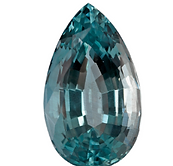
Citrine
Part of the Quartz family it gets its name from the Latin word for lemon because, of its
yellow sunshine lemony colour. It has this warm mellow glow with autumnal hues. You'll often see Citrine matched with other gem families or shining bright with dazzling diamonds.
Trivia: Most Citrine starts out life as Amethyst, which after heat treatment of 425 - 485°C turns the purplish stone golden.
While showcasing wearing this beautiful jewel, know you
are wearing the Planetary stone of the Sun!
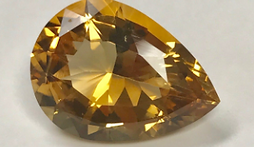
Diamond
Radiant, glittering, and simply stunning, these precious gems have always held a special
place in a girl's heart. Known as the hardest material known to man, nothing can compare to their structural magnificence.
Sapphires were the traditional engagement ring until 1919 when Marcel Tolkowsky
introduced the first ''Round Brilliant Cut'' and forever changing the jewellery industry. Since
then, diamonds have been faceted to achieve optimum brilliance and sparkle. Countless attempts have been made to replicate the 57 facet cut style, but none have truly succeeded. Whether enhancing someone else's beauty or standing on its own in all its glory, a diamond is that must-have jewel that completes any look effortlessly.
Trivia: The youngest known diamond is still 650 million years old! The most famous large faceted diamond weighs over 530 ct and measures 58.9 × 45.4 × 27.7 mm – only slightly
smaller than a tennis ball! This of course can be found in
Royal Sceptre of the British Crown Royal Sceptre of the British Crown Jewels.
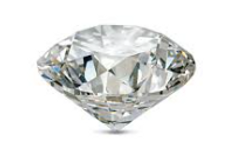
Emerald
Synonymous with the mysterious underworld of Columbia, Emeralds can also originate
from Brazil to India or Pakistan. While today's society favors rich bluish green hues, some still
consider the profound garden greens of old as superior. Rarely flawless, emeralds are full of beautiful and interesting inclusions.
To enhance their beauty, it is a common and accepted practice to oil the
stone. Therefore, emeralds require a little more consideration and care than other gemstones.
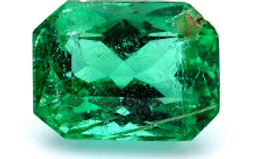
Trivia: Creating controversy in the modern world, the ‘Bahia Emerald’ is this Century’s cliff-hanger.
As one of the largest ever rough Emeralds found (381 kg, 180,000ct), it’s narrowly escaped a Hurricane,
been stolen from Police custody, lost in gambling bets and is currently in hiding and being battled over 10 years later!
Garnet
Garnets come in all sorts of colours and shades. They are part of the history of jewellery,
appearing in some very famous pieces. One of the most commonly known is the Almandine Garnet, which combines bright reds and scarlets with earthy browns for a unique look.
Trivia: In Prague – home of some of the earliest Garnet mines - you can visit the “Magic Garnet Museum”
which features a truly impressive collection of historical and modern Garnet jewellery.
Tradition holds that Garnet given as gifts, award loyalty and affection upon the receiver.
No matter the truth in the myth, a gift of fine garnet jewellery will always be appreciated.

Opal
Gemmologists absolutely adore this spectacular gemstone. Each stone will have its
own mesmerising qualities and sparkling refractions of the light. From snowy white to black,
Opal's enchanting display of colours can showcase every hue under the sun - blues, greens,
reds, purples; you name it. The Stones playful natural state enhances the beauty of whoever
wears it.
Trivia: Opal’s history is shrouded in superstition and myth. In Ancient Greece it was the “Stone of Prophecy”
believed to grant its owner great wisdom and foresight. The Greeks also believed that the magnificent Fire Opals
were formed from Zeus’s tears after his victory over
the Titan’s. In India they were thought to have originated from the Goddess of Rainbows.
Today however, Opal is the national gemstone of Australia, bringing them much luck and good fortune!

Pearl
Pearls, they're like the ultimate hidden gem of the oceans. They're so smooth and beautiful,
inviting to touch and rarely found in natural format, often cultured. Apparently, this process was
developed by some British biologist back in the late 1800s (1892-1895) but it wasn't patented until
1916 by the Japanese. There are two types of cultured pearls - freshwater and beaded. The
freshwater ones are mostly farmed in China and they basically take tissue from a mussel and stick it into another mussel's reproductive organs
The beaded pearls that use natural seed pearls, micro beads or even tiny Buddha models to get those lustrous pearls.
You can find South Sea pearls, Akoya pearls, Tahitian pearls - all sorts of options.
Trivia: Elizabeth Taylor once owned one of the world’s most famous Pearl’s – La Peregrina.
With a history spanning over 500 years it had belonged to many members of European Monarchy.
Always one for drama, within minutes of Liz being in possession of La Peregrina, one of her dogs stole the Pearl and
proceeded to chew on it! Rumour has it that a small
indent on the skin of the Pearl was caused by this incident.
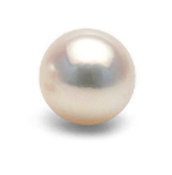
Peridot
Peridot is a unique gemstone. It's only ever found as an olive green colour. Interestingly
peridot crystals have been found in meteorites that fell to Earth – So an extraterrestrial gemstone.
You can easily identify an Peridot by its large birefringence. This is where you can look through the stone and see an obvious mirror image of the facet edges.
Trivia: Peridot is an ancient stone. Cleopatra was a known fan of “green” stones, which were originally thought to be Emeralds, but now understood to be an early misidentification meaning she wore plenty of Peridot.
Pirates wore Peridot on their sea journeys, to ward off
evil and enemies, as it was believed to bring luck, health, success and peace! Whether a Princess or a Pirate,
Peridot is a wonderful adornment to add to any jewellery collection.
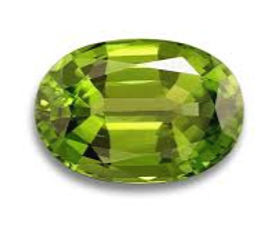
Ruby
Ruby is a gemstone that comes in a range of reds, from light pinkish hues to deep, warm, rich
tones. Despite this variety, there is only one colour variety of ruby. The finest rubies are hard to find and are said to come from Burma.
Interestingly, there are also synthetic rubies that look incredibly similar to the and can be difficult for an untrained eye to distinguish. Rubies rank second
only to diamonds on the Moh's Scale of hardness, making them a fantastic choice for everyday
jewelry.
Trivia: The world’s largest ever mined Ruby was discovered in the 1950’s. The Ruby weighed 1.8kg or 8,500ct
and was called “The Liberty Bell Ruby” after being fashioned in to replicate the well know statue of the Liberty Bell.
It was then stolen in 2011 in a well organised heist
at a jewellery store in Delaware, USA.
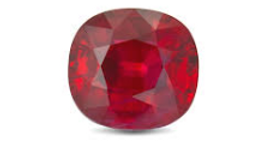
Sapphire
Sapphire, a member of the Corundum family, is commonly assumed to always be blue,
but can actually occurs in most colours of the rainbow. Other members of the corundum family are
described using their colour as a prefix since ''sapphire'' alone is assumed to be blue. Blues can range from pale and purplish to deep, clear, or opaque.
Fancy sapphires can also be green, orange, purple, pink or yellow.
Sapphire is found in many locations and opinions vary on which are the ''finest'' but
those from Burma are often considered highly valuable. Interestingly enough, even if a sapphire
doesn't have a nice appearance compared to others, its origin can still affect its price.
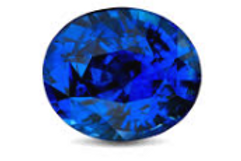
Trivia: The worlds most recognised Sapphire is probably in the engagement ring of the late
Princess Diana – now belonging to the new Princess of Wales. The 12ct Sri Lankan beauty is surrounded by 14 round cut diamonds and set in 18ct white gold. The infamous ring was
designed by in 1981Garrard and cost £28,000.
Tanzanite
This gemstone, born over 500 million years ago, boasts a beauty that is unrivalled. It
took the eruption of Mount Kilimanjaro to create the perfect mix of heat, pressure and rare chemicals to form this magnificent jewel.
While it mostly occurs in a greenish-brown colour naturally, legends tell
us that a massive fire swept through the valleys beneath the volcano, transforming these pebble-like stones into breathtaking blues and purples.
It is said that a lucky Masai tribesman stumbled across them after the ground
had been scorched bare and claimed this ravishing discovery as his own.
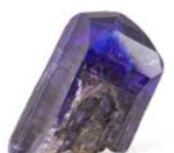
Trivia: In 1961 Tiffany & Co renamed what was then known as “Blue Zoisite” (Tanzanite’s chemical family name)
to “Tanzanite” to capitalise on the rarity and singular location of the gem.
Topaz
Topaz is a gemstone that comes in a range of different colours, but the most well-known
shades are ''Imperial'' a reddish-orange hue, and ''London Sky or Swiss'' which encompass all
shades of blue. Lapidaries have the freedom to get creative with topaz, resulting in some truly
exquisite cuts and styles.
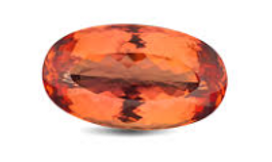
Trivia: Probably because of its naturally brownish-orange colour and sparkle, the Sanskrit
word for Topaz translates to “fire”. During the Middle Ages, Topaz was prescribed to prevent Death by strengthening the mind also to cure weakened vision as well as mental illnesses!
Gemstone Size Chart
Gems Stones | 4x2 MM | 5x3 MM | 6x3 MM | 7x3 5 MM | 8x4 MM | 10x5 MM | 12x6 MM | 14x7 MM |
|---|---|---|---|---|---|---|---|---|
Alexandrite | .04ct | .12ct | .35ct | .63ct | 1.30ct | 1.30ct | 2.15ct | 2.90ct |
Amethyst | .04ct | .10ct | .20ct | .40ct | .70ct | .70ct | 1.30ct | 1.80ct |
Aquamarine | .04ct | .10ct | .25ct | .45ct | .75ct | .75ct | 1.60ct | 2.40ct |
Citrine | .04ct | .10ct | .20ct | .40ct | .70ct | .70ct | 1.30ct | 1.80ct |
Diamond | .03ct | .10ct | .23ct | .47ct | .80ct | .80ct | 1.25ct | 1.90ct |
Emerald | .04ct | .12ct | .27ct | .48ct | .80ct | .80ct | 1.70ct | 2.50ct |
Garnet | .05ct | .13ct | .30ct | .60ct | 1.00ct | 1.00ct | 1.60ct | 2.50ct |
Opal | .02ct | .09ct | .16ct | .34ct | .57ct | .57ct | .83ct | 1.30ct |
Peridot | .05ct | .12ct | .26ct | .50ct | .85ct | .85ct | 1.25ct | 2.00ct |
Ruby | .05ct | .15ct | .34ct | .65ct | 1.05ct | 1.05ct | 1.60ct | 2.25ct |
Sapphire | .05ct | .15ct | .34ct | .65ct | 1.05ct | 1.05ct | 1.60ct | 2.25ct |
Topaz | .04ct | .11ct | .30ct | .56ct | 1.00ct | 1.00ct | 1.55ct | 2.50ct |
Tourmaline | .04ct | .12ct | .24ct | .45ct | .75ct | .75ct | 1.55ct | 2.00ct |
Zircon | .06ct | .17ct | .36ct | .69ct | 1.25ct | 1.25ct | 1.75ct | 2.60ct |